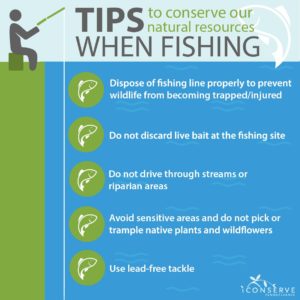Clean waterways are healthy waterways
July 23, 2017We’re blessed with an abundance of waterways in the Lehigh Valley — ponds, lakes, rivers and streams all give us ample opportunity for swimming, boating, and fishing. Anglers are especially lucky, as the region boasts a number of high-quality trout streams.
There are steps we can all take in order to keep these waterways healthy, though it may take rethinking some long-held beliefs. The Fish and Boat Commission , for instance, recommends letting brush grow up along stream banks:
, for instance, recommends letting brush grow up along stream banks:
“To this day, it is often considered an acceptable practice to keep stream channels “clean” by cutting brush from the stream banks and by removing larger woody debris from the channel. Although these efforts seem pleasing to the eye, they usually prove detrimental to the aquatic environment. Large woody debris (fallen trees, roots, log jams) and vegetative matter, such as leaves and twigs, which enter the stream channel, are an important and necessary component of the aquatic ecosystem. This material serves as a primary food source as well as habitat for many organisms throughout the food chain. Larger woody debris helps to form and shape the stream channel and creates variability in habitat types. Woody debris can also provide excellent trout habitat and is not easily duplicated.”
They also suggest careful management of the riparian zone (also called a buffer zone or riparian buffer) — the land area adjacent to a stream:
“Having a vegetated buffer zone between the waterway and other land uses has many benefits. Root systems help to keep stream banks stabilized, reducing the amount of silt that enters the stream. Shading from the tree canopy helps keep water temperatures cooler, which is necessary for the survival of many aquatic organisms. There is a direct increase in food, cover and nesting habitat for a variety of terrestrial wildlife species. Woody debris and leaf litter, which end up in the stream, are a necessary element in a healthy aquatic ecosystem’s “food chain.” Many aquatic invertebrates use this material as habitat and as a food source. The aquatic invertebrates in turn create an ample forage base for fish. Larger trees absorb excess nutrients through their root systems, changing them into plant tissue, while some nutrients are broken down by organisms in the soil and leaf litter. Sediment can also be filtered out by thick, understory vegetation.”
Even if you don’t have property that butts up against a stream, you can still help by ensuring runoff from your property isn’t polluted by using fertilizer sparingly and disposing of chemicals properly.
And we all have a duty to clean up after ourselves — whether you’re an angler, boater, swimmer, picnicker or just taking in the scenery: discarded fishing line, bait tins, cigarette butts, bottles and cans, tackle and trash often litter the banks of our streams and lakes. If you brought it in, take it back out (and it wouldn’t hurt to take out some extra along the way).
Fishing line poses a unique threat to wildlife — fish, turtles and waterfowl can get tangled in it or ingest it. Even worse, it lasts for many years, presenting a long-term problem. One way to keep your line from fouling the water — and land — around your favorite fishing hole is managing snags properly. Instead of cutting a tangled line near the reel, point the tip of the rod at the spot in which it is snagged, then tighten up on the drag, take up slack on the line, and then pull until the line breaks. It should break closer to the point at which it’s snagged — leaving much less line behind. If you can safely reach a line that’s tangled in trees or bushes, don’t leave it behind — untangle it and dispose of it properly.
If we all work together, we can keep our waterways clean and healthy.